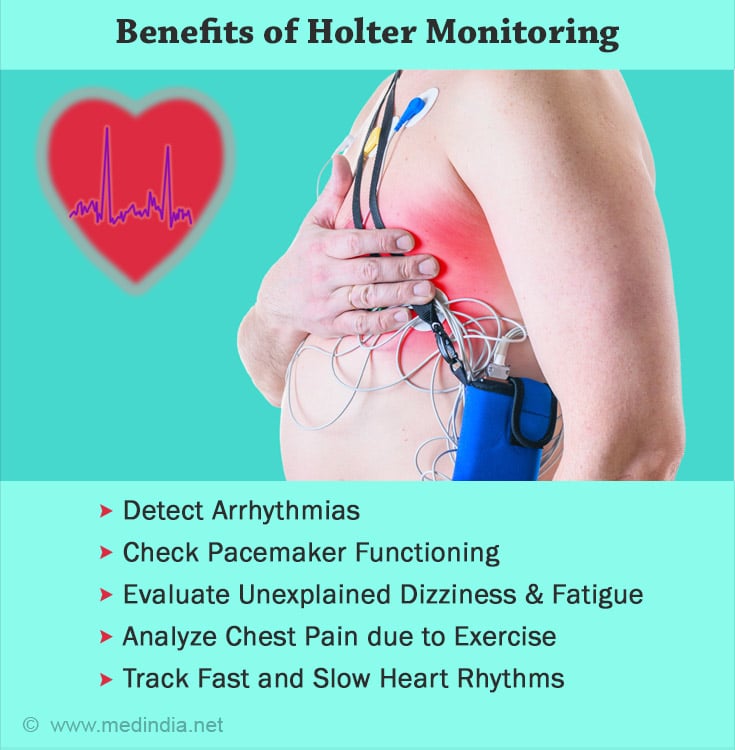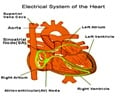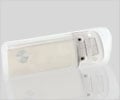- Holter Monitor - (https://www.heart.org/en/health-topics/heart-attack/diagnosing-a-heart-attack/holter-monitor)
- Holter Monitor - (https://my.clevelandclinic.org/health/diagnostics/21491-holter-monitor)
About
Holter monitor is a portable and wearable device used as a home monitor to record the heart rhythm round the clock from doing physical activity to sleeping with Holter monitor.
It was developed by Norman J. Holter, an American researcher in the 1940s. The Holter monitor uses the galvanometer’s principle to continuously record the electrical activity of the heart (continuous ECG or EKG) for over 24 hours to 48 hours.
Holter Monitoring Purpose: It is to understand conditions such as arrhythmias-heart rhythm disorders (irregular heartbeat), fatigue, fainting, palpitations, and dizziness.
Standard ECG Vs. Holter Monitoring:
- Conditions,such as dizziness, occur suddenly and subside after some Hence, are not detected by the standard EEG.
- If a standard ECG is not taken during the occurrence of these events, it becomes difficult to detect such conditions.
Continuous monitoring tracks the electrical activity of the heart in real-time, is preferred to overcome these limitations(1✔ ✔Trusted Source
Holter Monitor
Go to source).
The Holter monitor is also known by other names such as continuous electrocardiography or ambulatory electrocardiography or ambulatory electrocardiography.
Procedures in a Holter Monitor Test
We should note that t here is no pain involved in this procedure.
It involves wearing a monitor (weighing about 190 grams and measuring 70 x 95 x 20 mm) equipped with a flashcard.
- The monitor records data from 2 to 3 adhesive electrode patches attached to the chest with lead wires
- This electric activity is stored on the flashcard for 24 to 48 hours, and the monitor is battery-operated
- Patients carry it in a pouch around the neck or waist and are asked to maintain a diary noting symptoms and their exact times
- Before starting, the doctor explains the procedure and reviews the patient's medical history
- The patient removes jewelry and upper body accessories, and if needed, the chest may be shaved for electrode placement
- Showering is advised before attaching the electrodes, as the patient cannot shower while wearing the monitor
- The patient learns how to replace and attach electrodes if they fall off and keeps the monitor close during daily activities
Types of Holter Monitoring
There are two types: continuous recording and continuous monitoring. Continuous recording compiles data over a set period for later analysis. In contrast, continuous monitoring is real-time and wireless, allowing remote access 24/7. It sends alerts for significant cardiac events, facilitating immediate interventions and reducing the time to see the doctor.
Uses of a Holter Monitor
The Holter monitor may be used for the following purposes:
- Tocheck the condition of a pacemaker
- To detect arrhythmias of the heart
- To detect possible cardiac conditions that could be the cause of dizziness, fatigue, and fainting
- To detect the risk of cardiac events in certain conditions affecting the heart, such as Wolff-Parkinson-White syndrome (abnormal electrical activity within the heart), weakness of the walls of the heart following a heart attack, or thickening of the heart walls (idiopathic hypertrophic cardiomyopathy)

- To monitor chest pain that does not occur due to exercise
- To analyze the effectiveness of drugs used to treat the heart for conditions, such as cardiac arrhythmia
- To detect slow heart beat rate (bradycardia) or fast heart beat rate (tachycardia)(2✔ ✔Trusted Source
Holter Monitor
Go to source)
Advantages of a Holter Monitor
- A Holter monitor test is a non-invasive test and can be used on an outpatient basis
- The Holter monitor can record ECG continuously, providing an overall picture of the heart activity
- The digital data can be obtained without any additional effort from the patient

- With monitoring periods of 24 to 48 hours, it captures intermittent abnormalities not observable in shorter tests
- It allows correlation of recorded data with symptoms, enhancing sensitivity in detecting irregular heart rhythms and identifying specific triggers
- Patients can continue their daily activities while wearing the monitor, promoting convenience and providing a more natural recording environment
Limitations of a Holter Monitor
- Abnormalities in the heart rate need to be correlated with patient When the patient does not log in the symptoms correctly, it is difficult to correlate and identify the condition of the heart.
- The data is recorded over time and does not give data collected at a specific time or in other words, real-time analysis.
- The diagnostic efficiency of Holter monitors is high for patients who exhibit daily However, it is low compared with the newer continuous recording devices.
- Certain medications and smoking can interfere with the recording of data in the monitors.
- Perspiration can cause the electrodes to fall off from the On the other hand, sensitive skin on the chest may be inflamed or irritated with continuous application of the electrodes.
- The wires and electrodes impede regular movements and activities and can cause some restrictions while wearing a holter monitor.
Holter Monitoring Side Effect and Risks
- While there are no major Holter monitoring risks and side effects involved, there may be some mild skin irritations and overall discomfort.
- Some electrical devices can interrupt the Holter monitoring signals. So, the patient is advised to keep clear of high-voltage areas, magnets, electrical signals and electronic devices, such as cell phone, portable music players, hair dryers, shavers, toothbrushes, and electric blankets.
Costs of a Holter Monitor Test
In the USA, a Holter monitor can cost between 400 to 4000 US dollars, while a Holter monitoring test price can cost around 300 to 600 dollars. In India, the cost of 24 hour holter test costs anywhere between Rs. 2500 to Rs. 4500.
Recent Advances in Holter Monitors
There are new Holter monitors that can record data for nearly 2 weeks. In addition, Holter monitors with 12-lead electrodes have been used to analyze heart rate irregularities in underwater divers at different stages (pre-diving, diving, and post-diving).












